ZStack Cloud Platform
Single Server, Free Trial for One Year
Comprehensive Data Center Infrastructure Solutions.
4S-compliant productized private cloud and seamless hybrid cloud
Offer a user experience consistent with VMware virtualization
A robust catalog of ready-to-deploy product
Supports storage resource pools with capacities exceeding PB levels
Covering scenarios from core to edge, cloud to cloud- native, and data management to AI
Deploy ZStack for scenario from datacenter to the edge.
ZStack provides innovative cloud infrastructure for ten major industries.
Comprehensive product documentation and tools
Upholding the value of Customer First and the mission of Serving Customer, ZStack is dedicated to providing secure and stable services for customers.
To educate ZStack partners and interested individuals about cloud computing and to cultivate cloud computing talent.
ZStack provides innovative cloud infrastructure for ten major industries

The report provides three major
solutions and customer case studies for transitioning from VMware to ZStack.
An IPv4+IPv6 dual stack is one NIC with two types of IP addresses: IPv4 and IPv6, and takes full advantage of both IPv4 and IPv6. With the IPv4+IPv6 dual stack, you can meet the needs of different business scenarios.
| Flat Network | Configurations |
|---|---|
| NIC | em1 |
| VLAN ID | 2002 |
| IP Range | 192.168.2.2-192.168.2.254 |
| Netmask | 255.255.255.0 |
| Gateway | 192.168.2.1 |
| DHCP IP | 192.168.2.3 |
| DNS | 223.5.5.5 |
| Flat Network | Configurations |
|---|---|
| IP Range | 234e:0:4568::2-234e:0:4568:0:ffff:ffff:ffff:ffff |
| Prefix Length | 64 |
| Gateway | 234e:0:4568::1 |
| DHCP IP | 234e:0:4567::3 |
| DNS | 240c::6644 |
 Note: You can also create an IPv6 flat network first, and then add an IPv4 range to a flat network.
Note: You can also create an IPv6 flat network first, and then add an IPv4 range to a flat network.Add an IPv6 range to the existing IPv4 network to form an IPv4+IPv6 dual-stack network.
 Note:
Note:  Note:
Note: 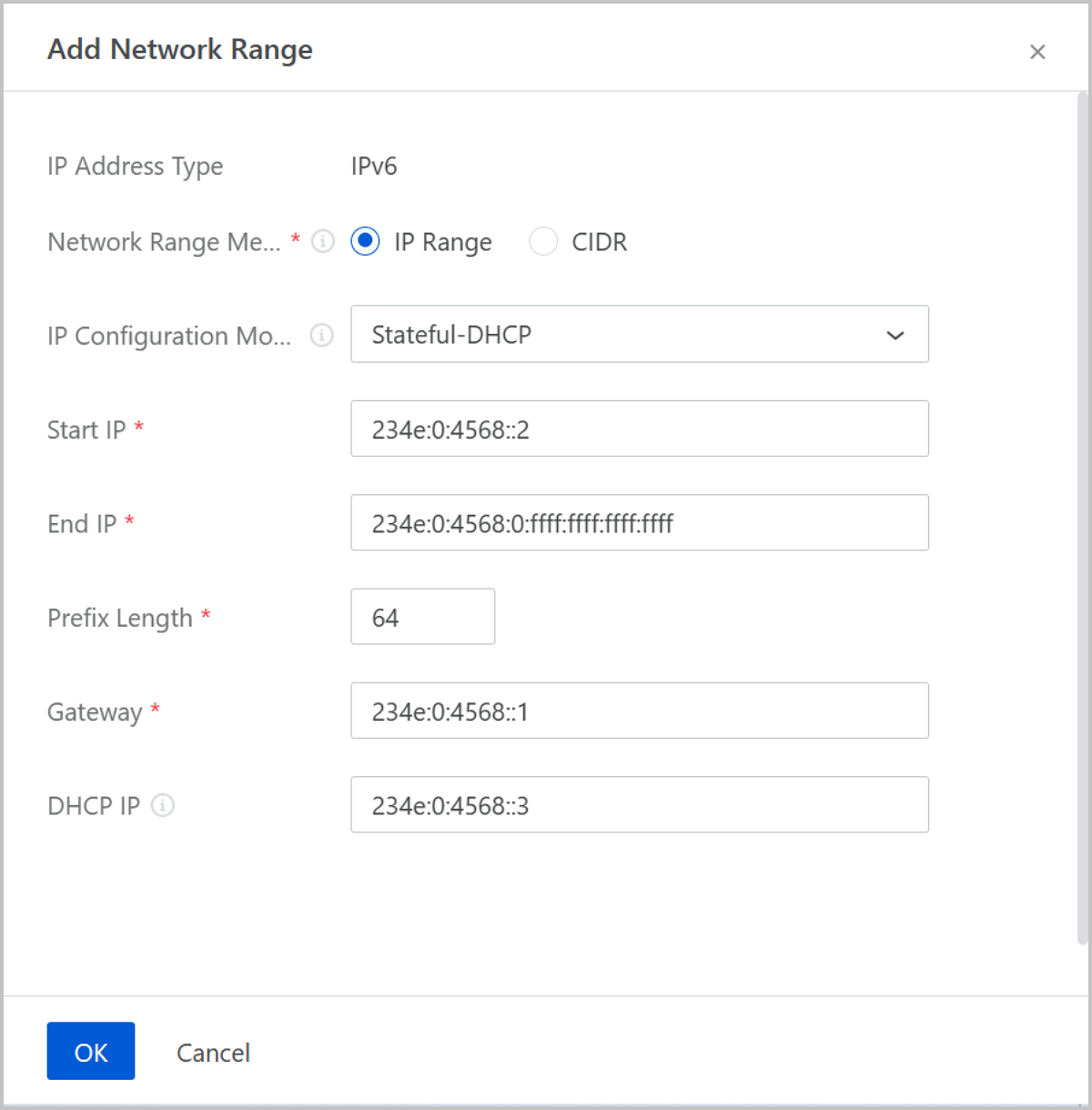
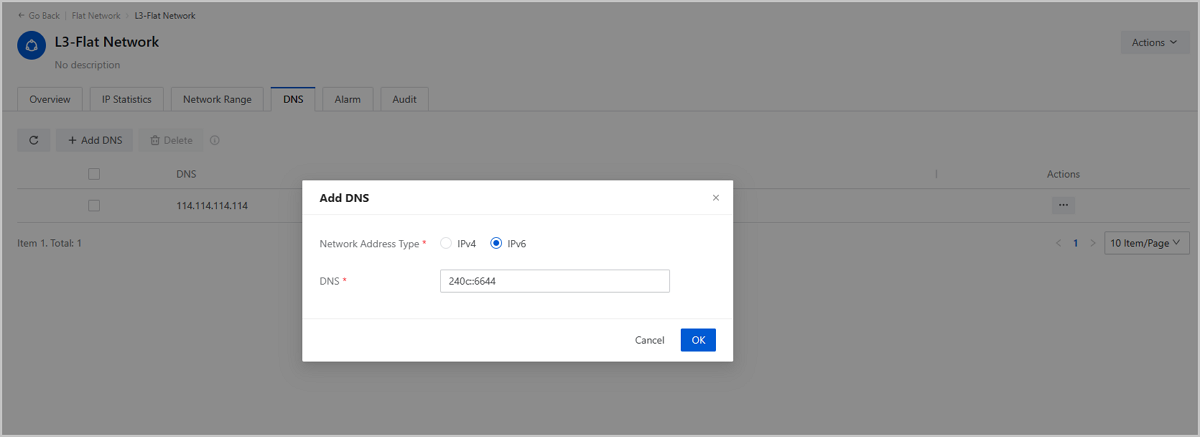
On the main menu of ZStack Cloud, choose Resource Center > Resource Pool > Virtual Resource > VM Instance. On the VM Instance page, click Create VM Instance. Then, the Create VM Instance page is displayed. On the displayed page, create two VM instances by using the IPv4 flat network, for example, VM-Dual Stack-1 and VM-Dual Stack-2.
[root@loaclhost~]# dhclient -6 eth0 //eth0 indicates the NIC name. Note: The address that begins with FE80 is the link-local address instead of the expected address.
Note: The address that begins with FE80 is the link-local address instead of the expected address.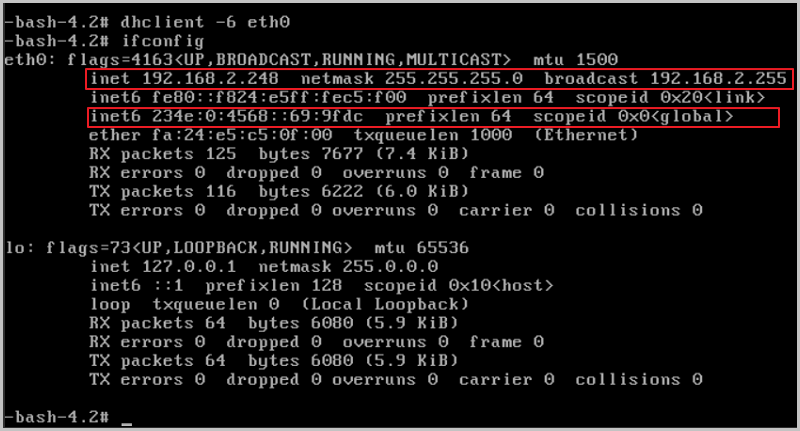
ping VM-Dual Stack-2.ping VM-Dual Stack-1.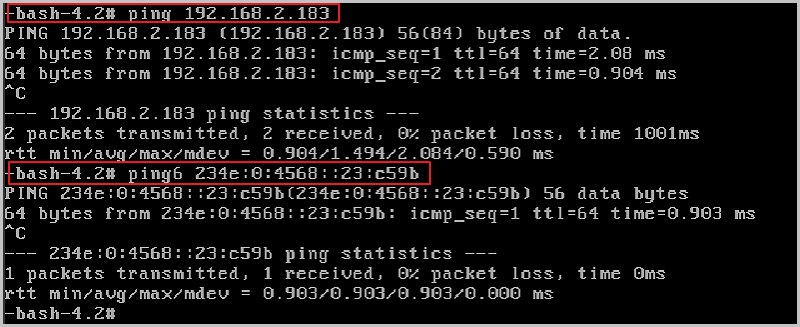
ping VM-Dual Stack-1.So far, we have introduced how to use a Dual stack (IPv4+IPv6) flat network.
On the main menu of ZStack Cloud, choose Resource Center > Network Resource > vRouter > vRouter Image. On the vRouter Image page, click Add vRouter Image. Then, the Add vRouter Image page is displayed.
 Note:
Note: 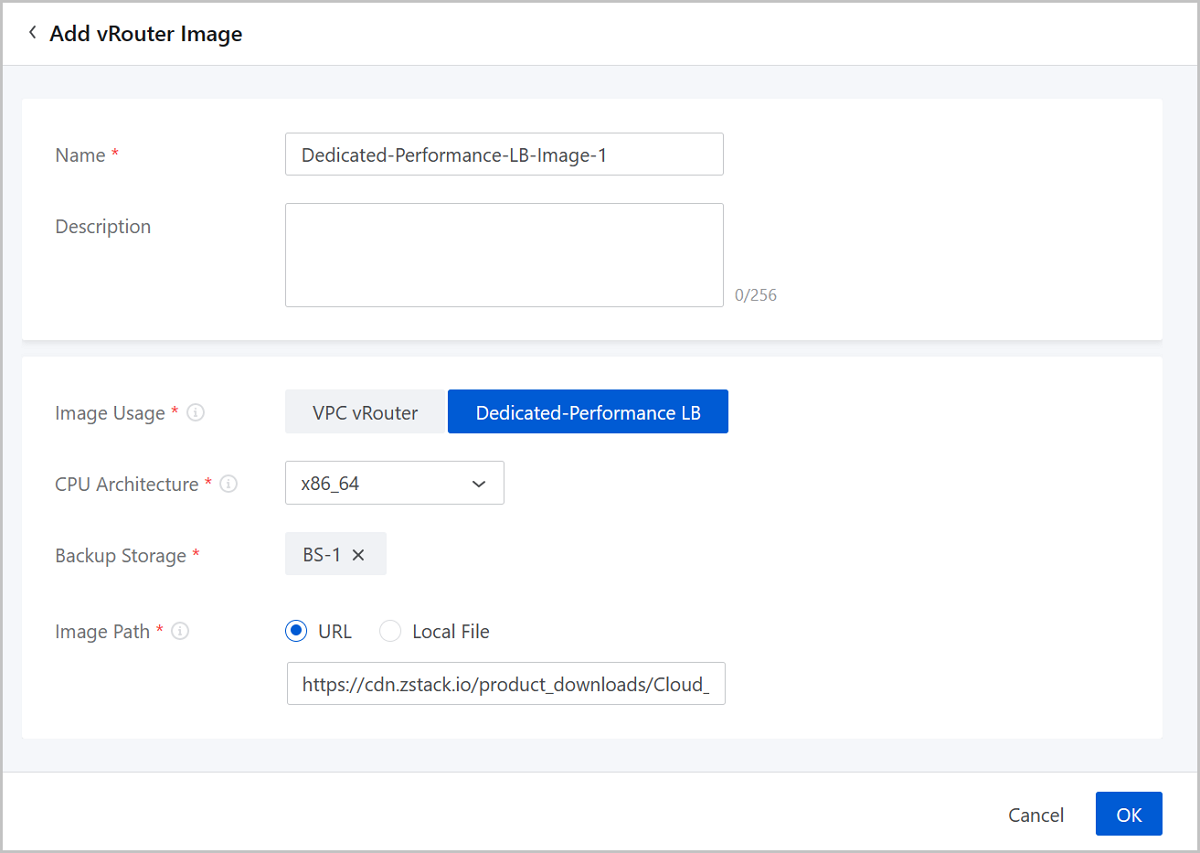
On the main menu of ZStack Cloud, choose Resource Center > Network Service > Basic Network Service > Load Balancing > Configuration. On the Configuration tab, click Create Load Balancer Instance Offering. The Create Load Balancer Instance Offering page is displayed.
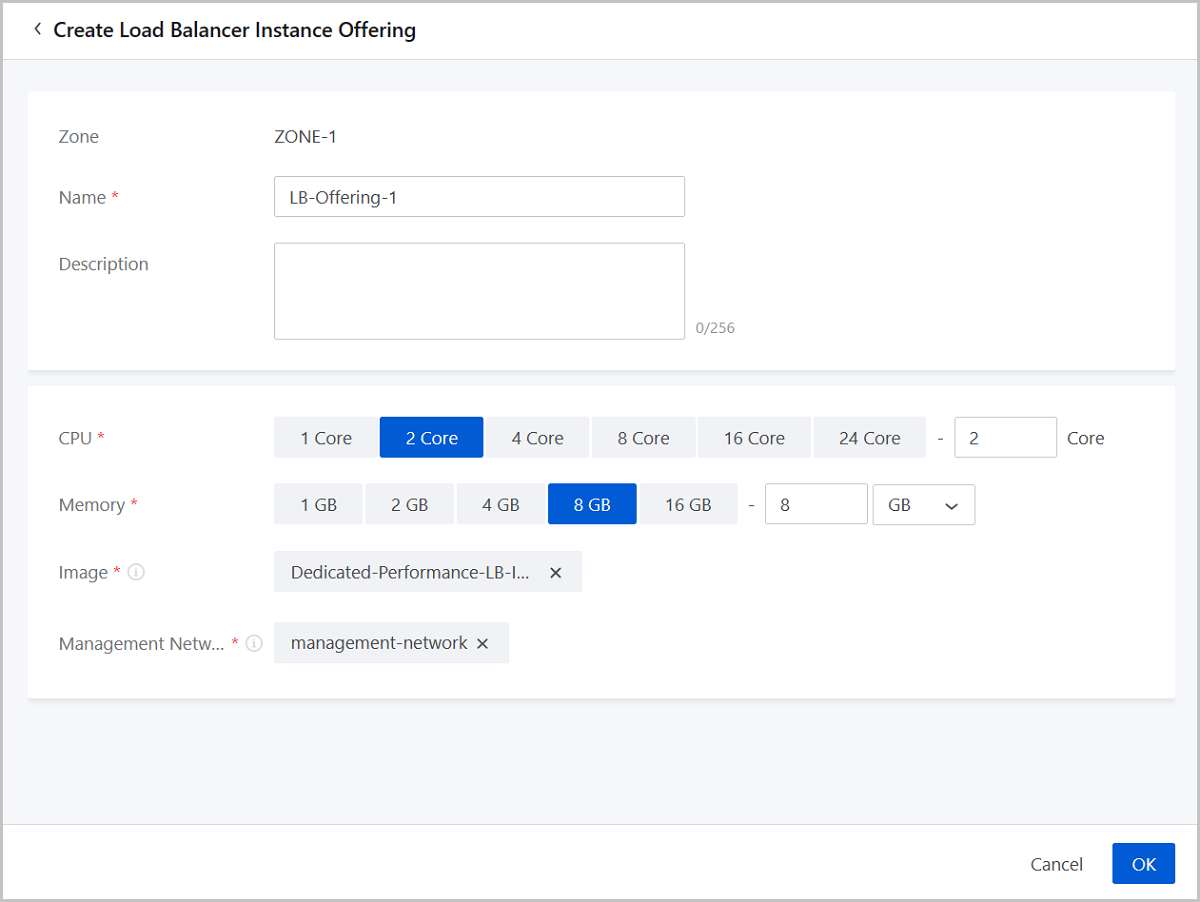
On the main menu of ZStack Cloud, choose Resource Center > Network Service > Basic Network Service > Load Balancing. On the Load Balancer page, click Create Load Balancer. The Create Load Balancer page appears.
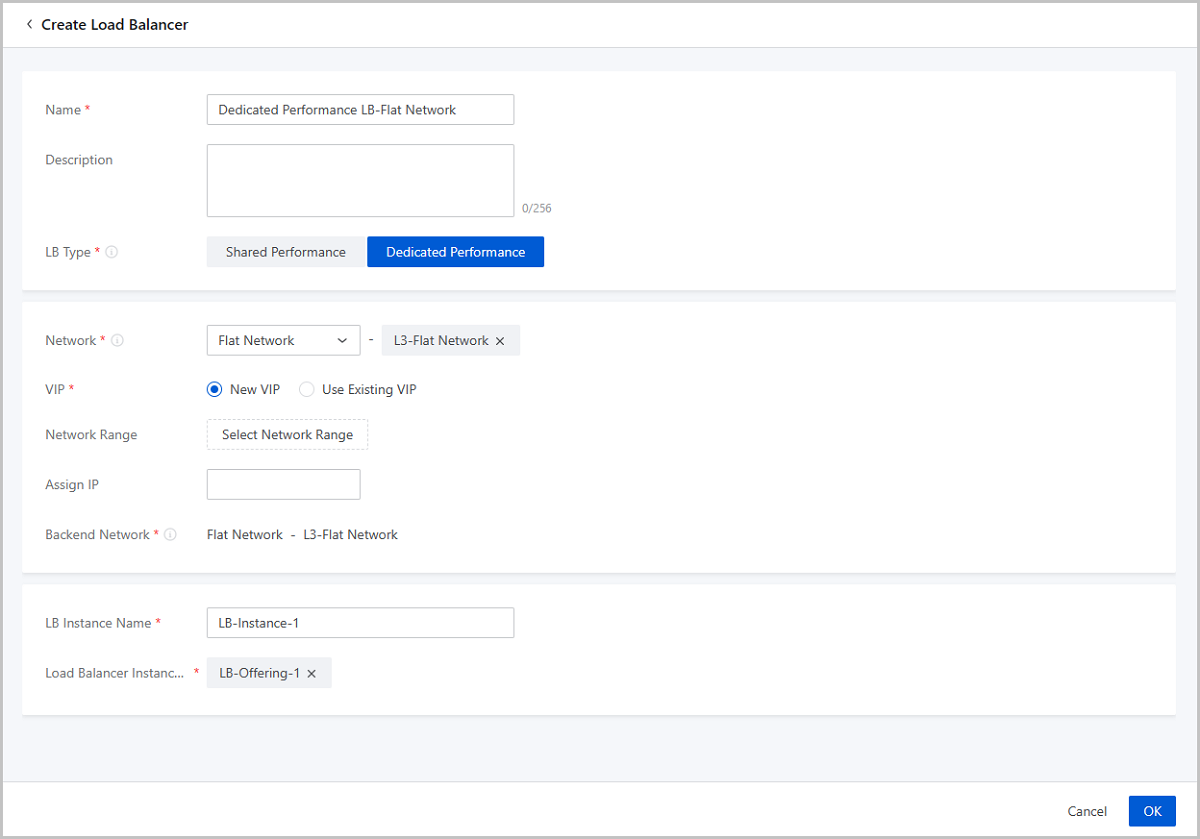
On the details page of the load balancer, click the Listener tab. On the tab, click Create Listener. The Create Listener page is displayed.
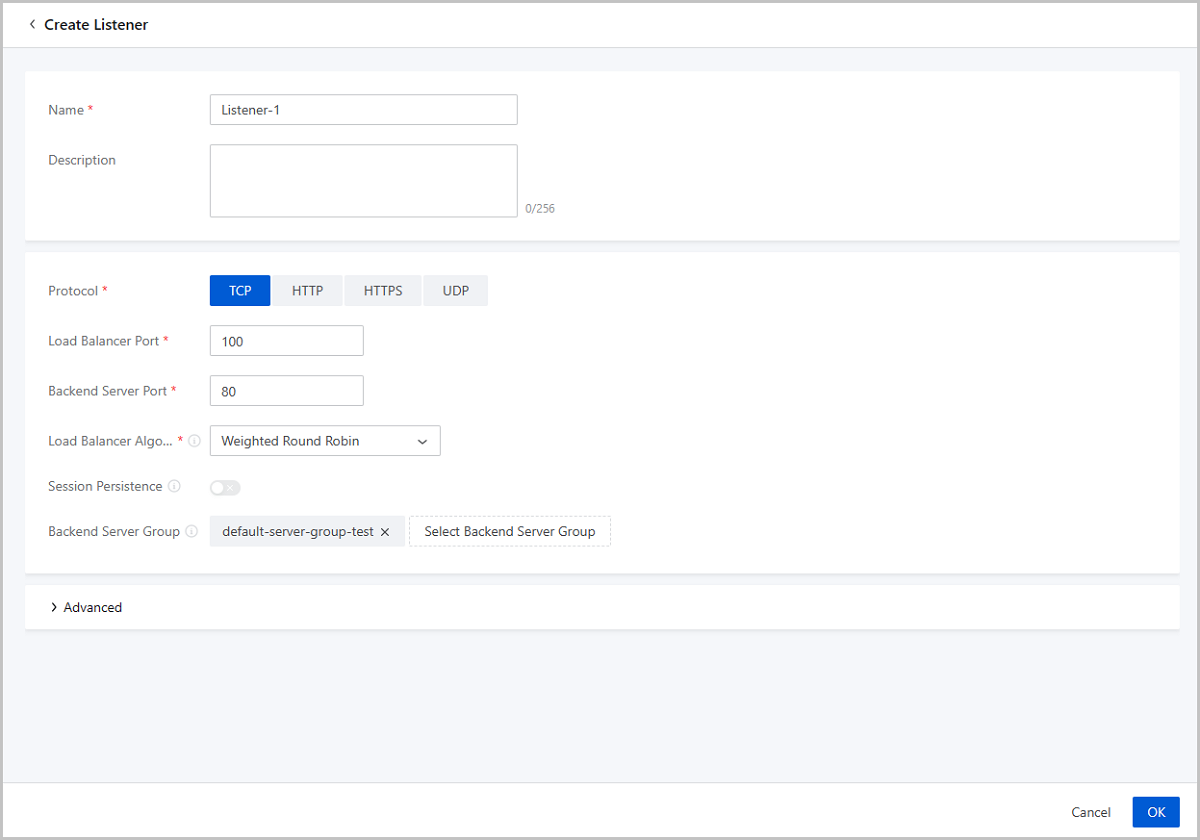
On the details page of the load balancer, click Backend Server Group. On the tab, enter the details page of the backend server group. On the details page, click Add Backend Server. Then, the Add Backend Server page is displayed.
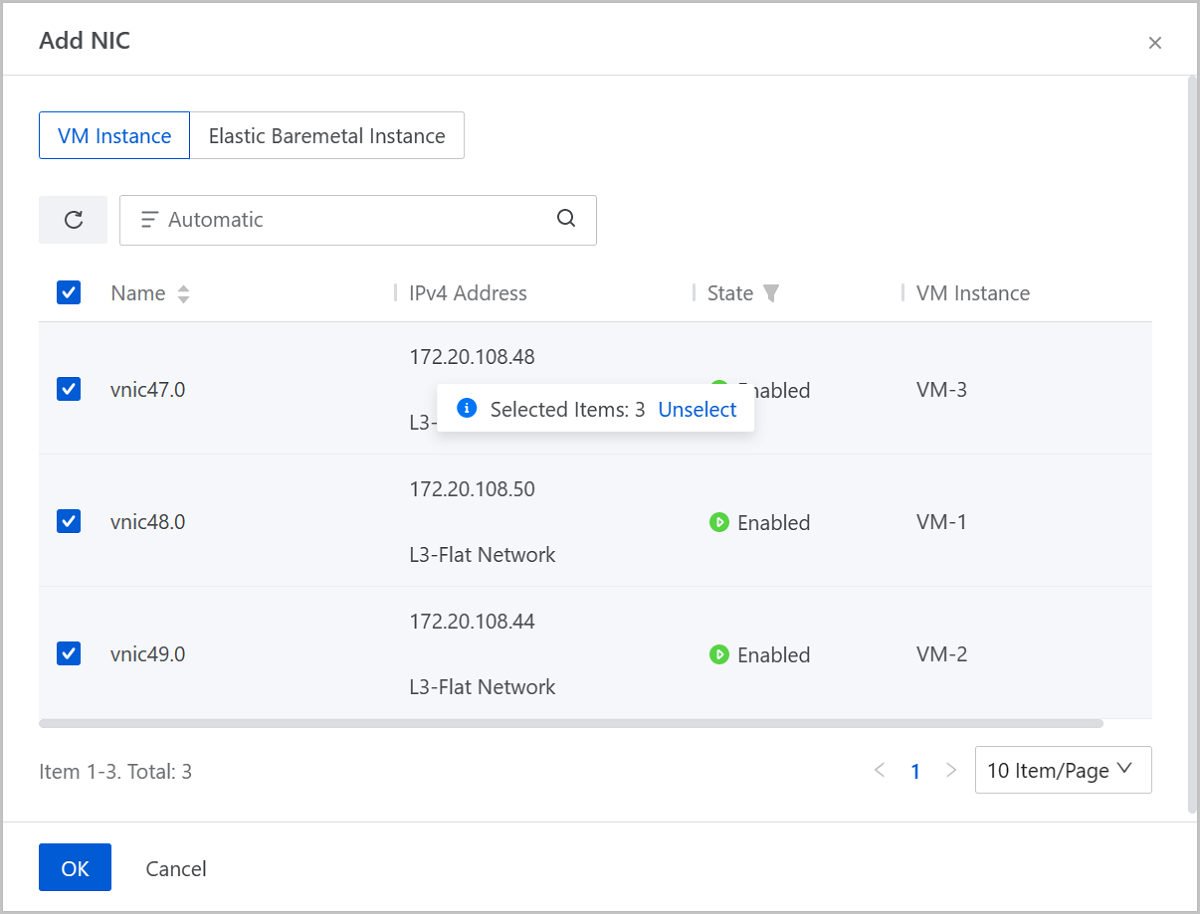
On the Add Backend Server page, assign a weighted value to the 3 VM instances respectively. Requests are more likely to be distributed to VM instances with a higher weight.
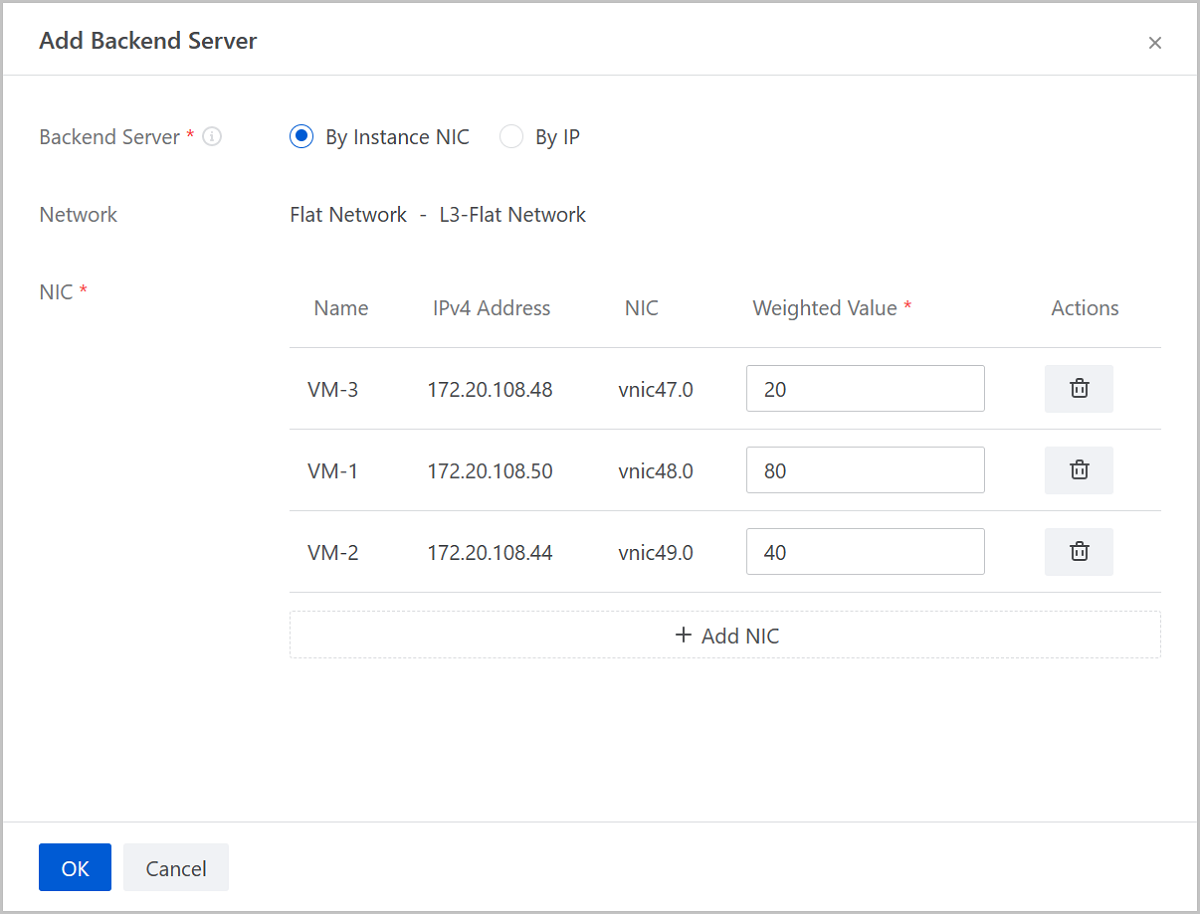
In this scenario, we will run the curl command in the port 100 of the VIP address (192.168.0.249) of the load balancer: for i in {1..20}; do curl 192.168.0.249:100; done.
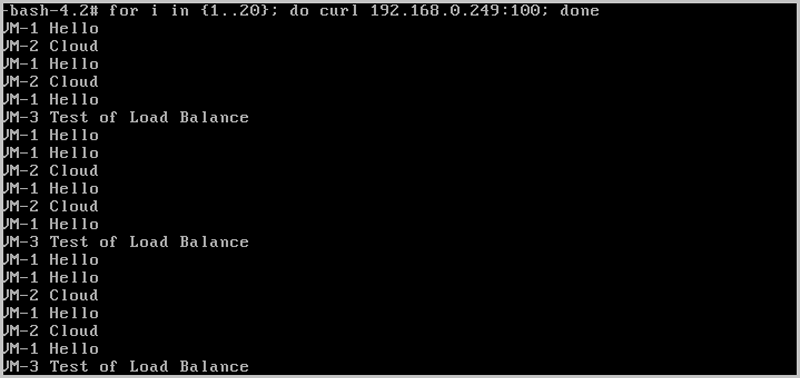
So far, we have introduced how to use the load balancing service based on a flat network.
Download Document Archives

